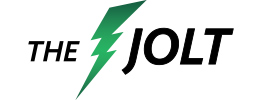Want to know the truth?
Most so-called “disruptors” are duds.
They’ve got flashy marketing and futuristic promises… but beneath the surface, there’s no real business, no sustainable growth, and no shot at long-term success.
Over 20+ years in markets has taught my partner Chris Wood and I that avoiding the big losers is just as important as finding the big winners.
That’s why we built a framework for identifying the red flags that almost always lead to disaster.
It’s the same checklist we use before recommending any stock in Disruption_X—our advisory that targets smaller, “dark horse” disruptors that can gain 1,000% or more thanks to the disruptive technologies and industries they’re shaping.
Now, let me show you the five red flags...
Red flag #1: Nothing to show but a good story
Every great disruptor has a compelling story. But a compelling story alone doesn’t make a great investment.
Many are just “story stocks.” All sizzle, no steak.
Falling for hype is one of the most common traps in investing. Investors get mesmerized by a vision of the future without checking the scoreboard today.
The classic example is the 3D printing boom of 2012. The story was irresistible: a “factory in every home” that would revolutionize manufacturing. I remember pessimists calling for 3D printing bans, as it would allow everyone to print their own guns.
Stocks like 3D Systems Corp. (DDD) soared over 6,000% on the sizzle. The reality? The machines cost six figures and were mostly used to print plastic trinkets. The hype was a decade (or two) ahead of the business.
When Wall Street finally noticed, 3D printing stocks fell 90% and never recovered, wiping out countless investors.
|
Chris and I look for a track record of fast, sustainable revenue growth (ideally 20% or more) over several quarters. Revenue is the ultimate reality check. It’s proof that real customers are paying real money for a product because it solves a real pain point.
I’d much rather invest in a company with actual sales at a higher valuation than a startup with nothing to show but a good story.
Decades of collective investing experience has taught Chris and I the upside for a proven disruptor is essentially unlimited.
Red flag #2: Valuation in the stratosphere
Sometimes even a great company can be a terrible stock.
This happens when the stock price becomes completely detached from any reasonable projection of future profits. When the price already reflects a decade of flawless success, you’re left with all the risk and none of the reward.
In Disruption_X, we use our proprietary GARP Quotient to sidestep stocks with valuations living on planet Mars. We built it to replace the old price-to-earnings filter because many great disruptors reinvest every nickel into growth.
The simple GARP Quotient formula is (Price-to-Sales Ratio) ÷ (Revenue Growth Rate).
Just divide the P/S ratio by the company’s growth rate (as a whole number). If a stock trades at 20X sales and is growing at 40%, its GARP Quotient is 20 ÷ 40 = 0.5.
We look for a score below 1.0, and ideally below 0.5. This simple formula is our guardrail. It keeps us disciplined and prevents us from chasing a stock to the moon.
Red flag #3: A feature, not a business
Some of the most seductive disruptors are built around a clever new feature, not a defensible business. The innovation is real, but it can be easily copied by a larger player.
Imagine a startup building a fantastic photo-filter app that goes viral. This is a feature.
What’s to stop Apple (AAPL) from building the same functionality into the iPhone? Or Instagram from rolling out a similar filter set? The company in question has no moat. It’s a tenant in someone else’s ecosystem.
Remember GoPro?
It created a whole new category with its tough, mountable cameras that captured incredible action shots. The stock was a Wall Street darling.
But as smartphone cameras became astonishingly good and more durable, the need for a dedicated action camera shrank. The “feature” of a great portable camera was absorbed by the ultimate platform: the smartphone in your pocket. Drone companies like DJI also started building incredible cameras directly into their products.
The result was GoPro’s stock collapsing 98% from its highs.
That’s why Chris and I hunt for platform technologies.
A platform technology is the foundation of an industry or a whole new way of doing things. It often provides the infrastructure or ecosystem that enables other entities (such as developers, businesses, or users) to create and grow.
Take Nvidia (NVDA), for example. It doesn’t just make a cool chip; its CUDA system is the platform for the entire AI revolution. Amazon Web Services provides the cloud infrastructure half the internet runs on. These companies have deep, wide moats.
That’s why we avoid the companies that just have cool features… and invest in those building platform technologies.
Red flag #4: A money-shredding business model
The company has a great idea, a real market, and a product that works. But the underlying economics of the business are flawed.
The poster child is Webvan from the dot-com bust. The idea was visionary: order groceries online and have them delivered to your door.
The problem? The business model was a disaster. The cost of the refrigerated trucks, drivers, fuel, and complex logistics meant Webvan lost money on every single order.
Blue Apron is a more recent example. It pioneered the meal-kit delivery service, sending boxes of pre-portioned ingredients and recipes to people’s homes.
Great idea, lousy business. It had to spend a fortune on marketing to get folks to try its service. The company was spending, for example, $100 in marketing to acquire a new customer. But that customer would only generate $80 in profit before canceling.
Think about that. It was a machine designed to destroy capital. The more it “succeeded” by growing sales, the faster it burned through cash!
Blue Apron IPO’d at a $2 billion valuation in 2017. It went down in a straight line before being bought out for $100 million in 2023.
Chris and I take great care to look at the unit economics. Does the company make money on one transaction? If they sell a product for $10, how much does it cost them to make and deliver it?
If a company cannot make money on its core transaction, it has a hobby, not a business. A red flag of the highest order.
This is why we make sure the companies we recommend in Disruption_X are either profitable or “intentionally unprofitable.”
An intentionally unprofitable company—like Amazon (AMZN) for its first decade—has a profitable core business but chooses to reinvest every penny of gross profit back into growth. That’s a sign of strength and a hallmark of some of the best disruptors in history.
A company that is unintentionally unprofitable because its business model is flawed is a sign of fatal weakness.
Red flag #5: The “SBC” scam
This is a critical red flag many investors miss because it’s hidden in the financials.
A company’s management team often pays itself and its employees with massive amounts of stock. This is called stock-based compensation (SBC).
Problem is, under standard accounting, this isn’t treated as a real cash expense. But it’s a very real cost to you, the shareholder, because it dilutes your ownership stake. A company can look profitable on paper while its shareholders are getting diluted into oblivion.
As Warren Buffett says, “If compensation isn’t an expense, what is it? And, if real and recurring expenses don’t belong in the calculation of earnings, where in the world do they belong?”
When we see glossy slide decks full of alphabet soup like “community-adjusted EBITDA” while the actual cash in the bank is vanishing, we know there’s a problem.
Take Snowflake (SNOW).
To attract the best engineers in a hyper-competitive industry, Snowflake pays them huge amounts of stock. Last year, it awarded $1.48 billion worth of stock to employees. That wipes out Snowflake’s supposed $913 million “profit” it recorded in 2024.
Investors only looking at Snowflake’s numbers on the surface have a completely misleading view of its true profitability.
You can’t fake cash. This is why we created our own metric: Real Cash Flow (RCF). We simply take a company’s cash flow and subtract the cost of stock-based compensation to see the true money left over for owners.
A company generating strong RCF is truly profitable. A company with huge cash flow that evaporates after you account for SBC is playing a shell game with your money.
Stephen McBride
Chief Analyst, RiskHedge



